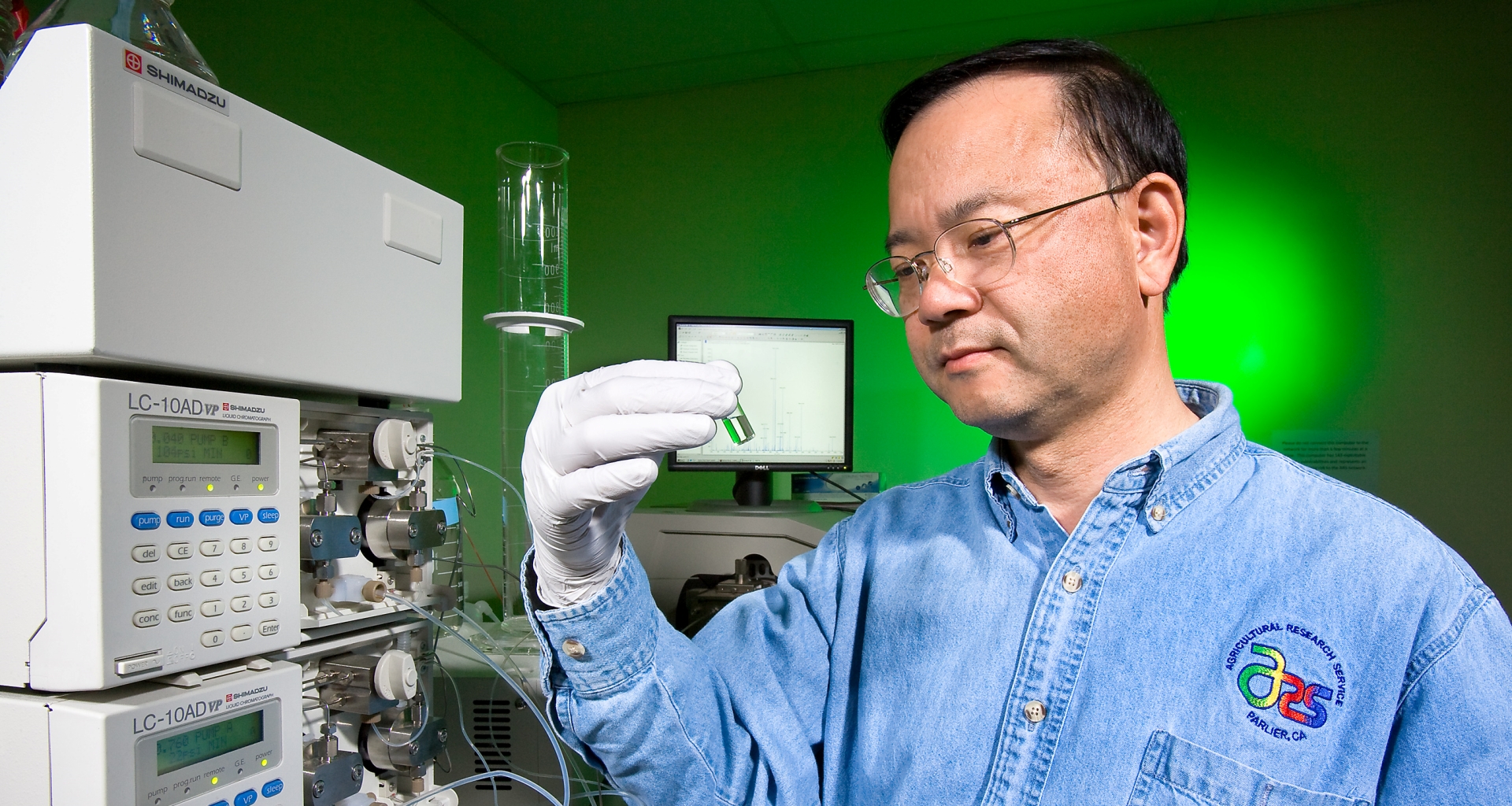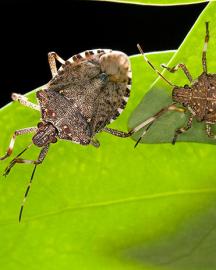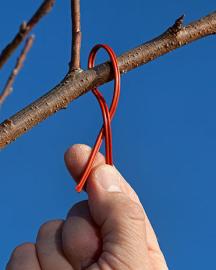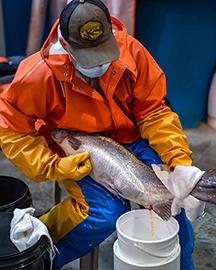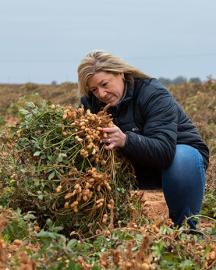Distinguishing Jekyll from Hyde in Citrus Disease
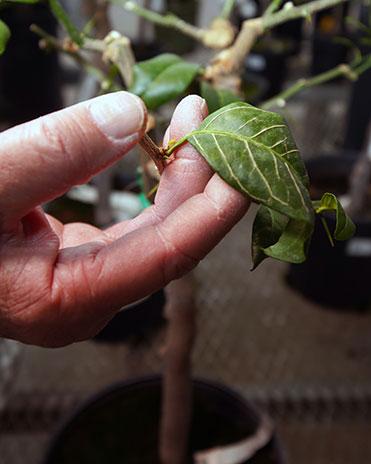
ARS researchers at the Crop Diseases, Pests, and Genetics Research Unit in Parlier, CA, have found a way to distinguish between two citrus diseases that are similar in appearance, but dangerously different.
The bacterium Spiroplasma citri causes citrus stubborn disease (CSD), which has symptoms that are easily mistaken for those of Huanglongbing (HLB), also known as citrus greening disease, caused by Candidatus Liberibacter asiaticus. CSD is fairly widespread in California but is manageable. HLB, on the other hand, is a devastating citrus disease subject to quarantine and immediate removal of the infected trees.
HLB threatens the survival of Florida citrus and is a potential threat to the entire U.S. citrus industry. ARS researchers have developed a sensitive procedure to identify and quantitate these two different bacteria in citrus tissue and vector material using the droplet digital PCR technique. This process is more sensitive and reliable than the standard molecular technique when pathogen counts in the test samples are low. The droplet digital PCR test provides a robust method to test symptomatic and non-symptomatic citrus samples for CSD and HLB in a single test, saving time and money. The test can also be used by regulatory agencies as an improved testing procedure to differentiate between deadly HLB and the more benign CSD.HLB threatens the survival of Florida citrus and is a potential threat to the entire U.S. citrus industry. ARS researchers have developed a sensitive procedure to identify and quantitate these two different bacteria in citrus tissue and vector material using the droplet digital PCR technique. This process is more sensitive and reliable than the standard molecular technique when pathogen counts in the test samples are low. The droplet digital PCR test provides a robust method to test symptomatic and non-symptomatic citrus samples for CSD and HLB in a single test, saving time and money. The test can also be used by regulatory agencies as an improved testing procedure to differentiate between deadly HLB and the more benign CSD.


